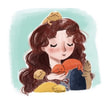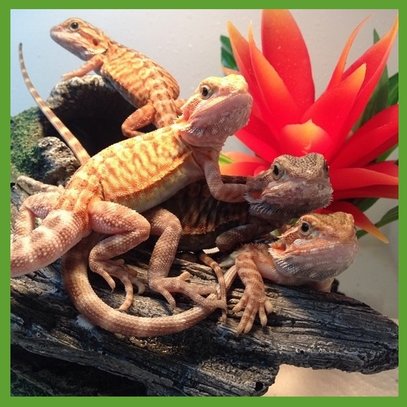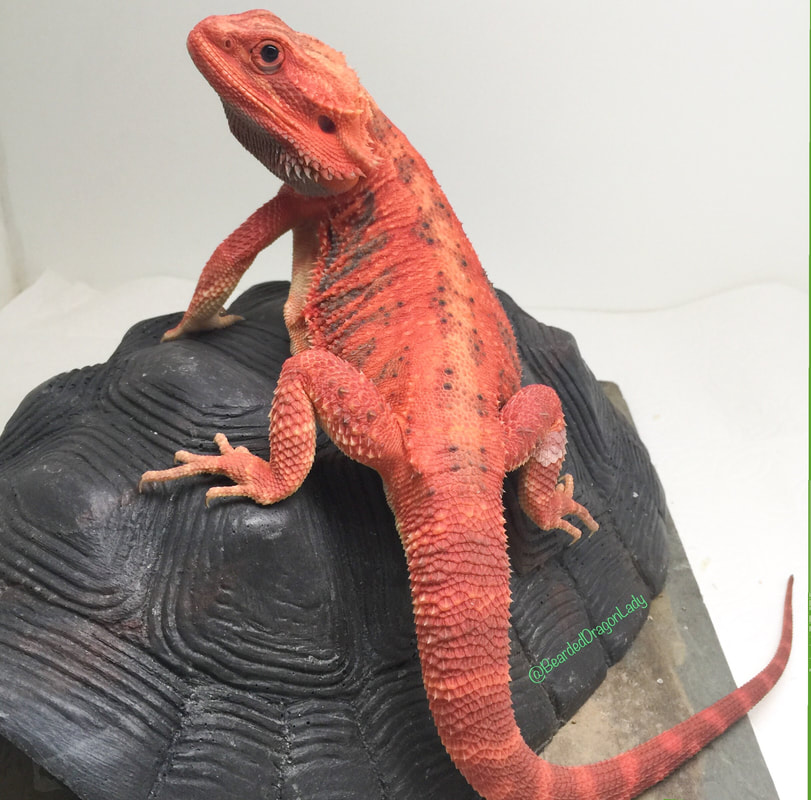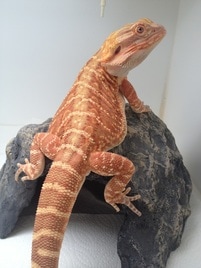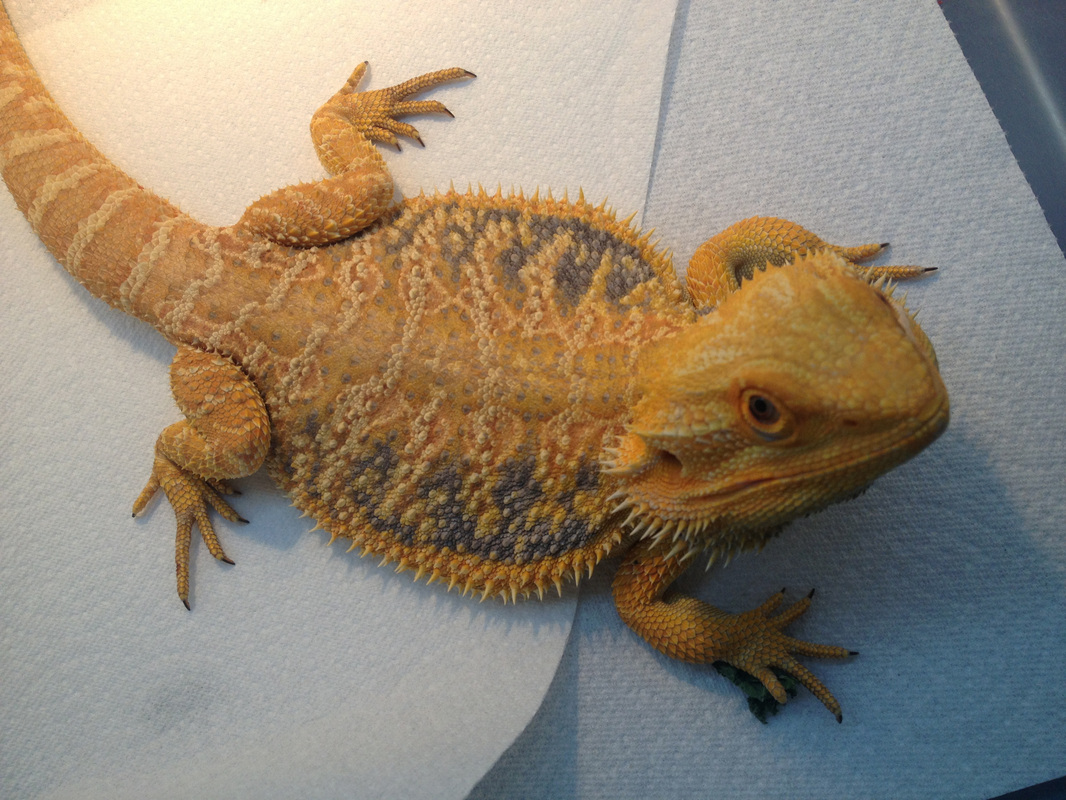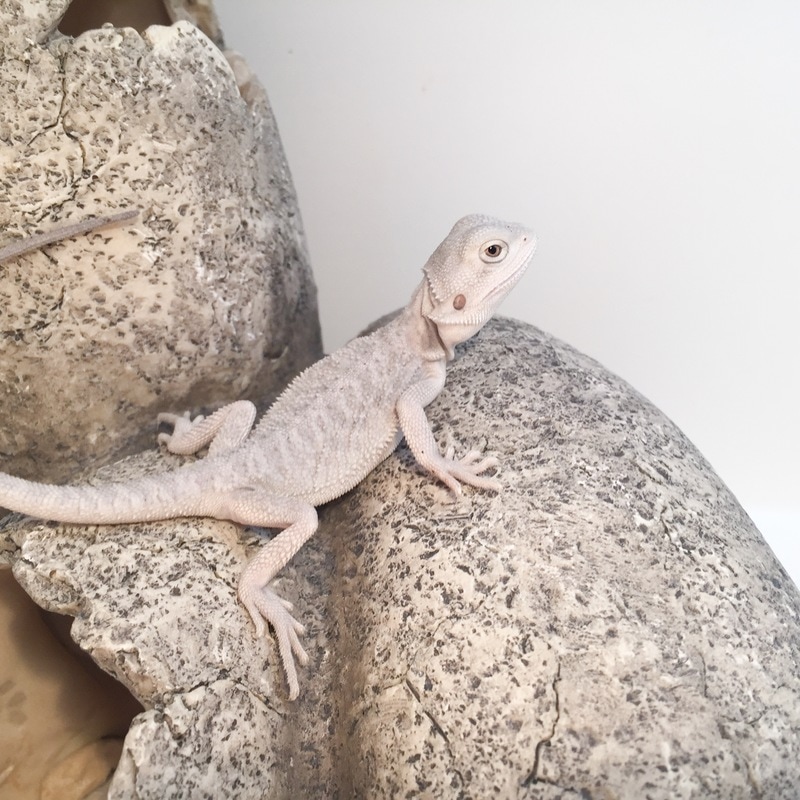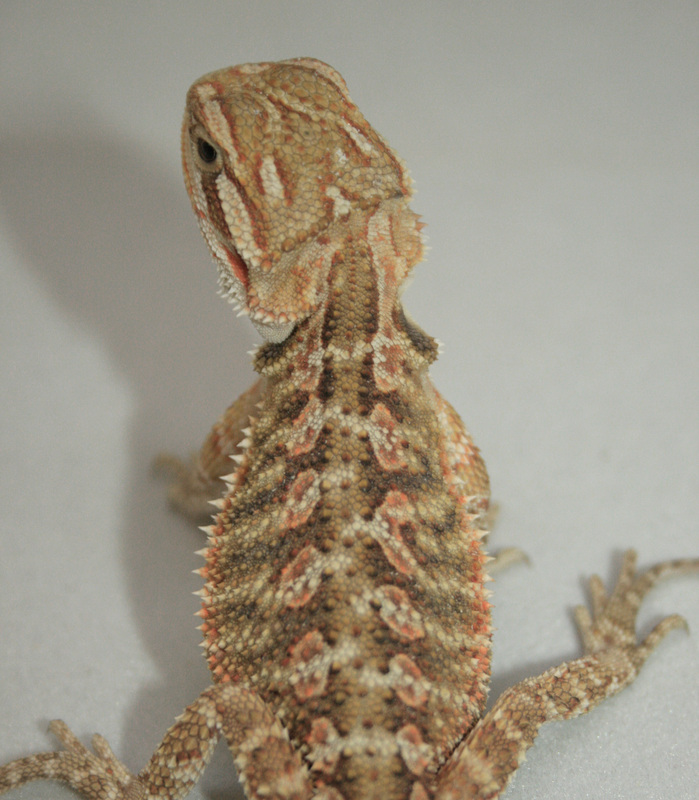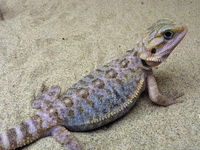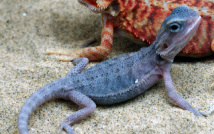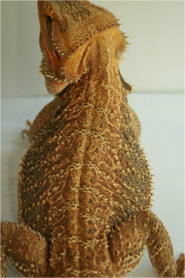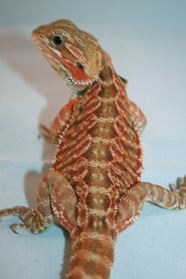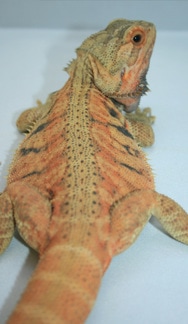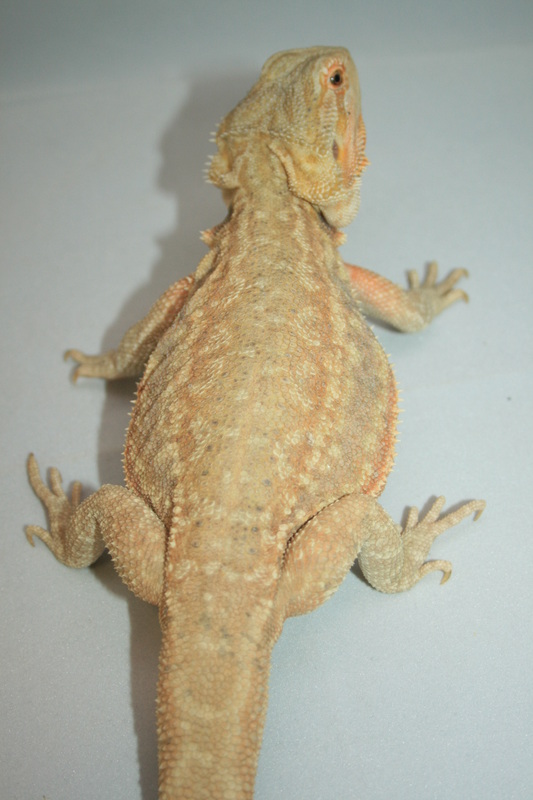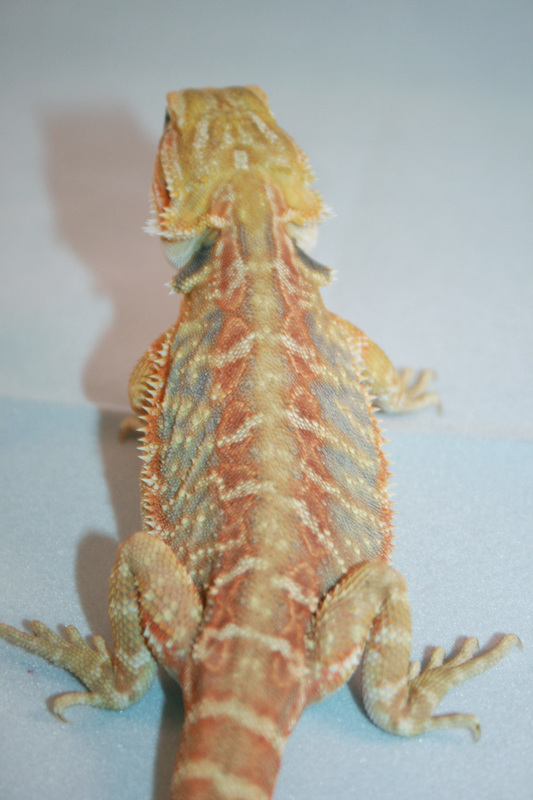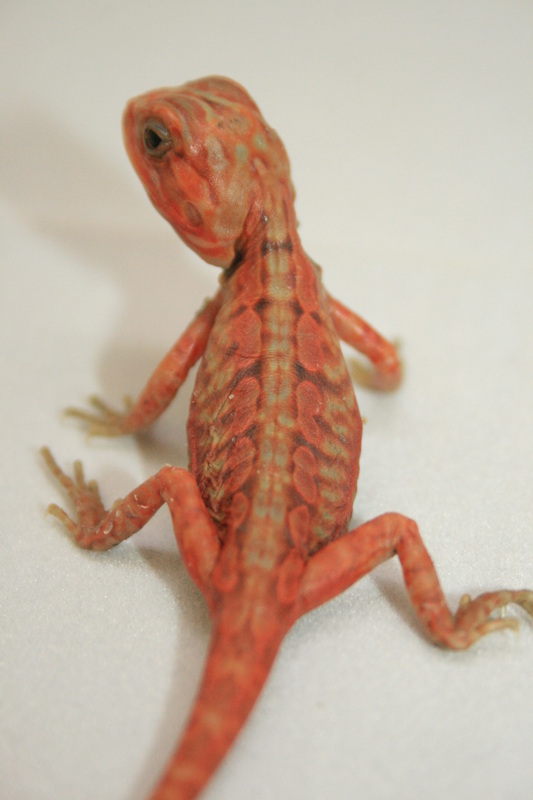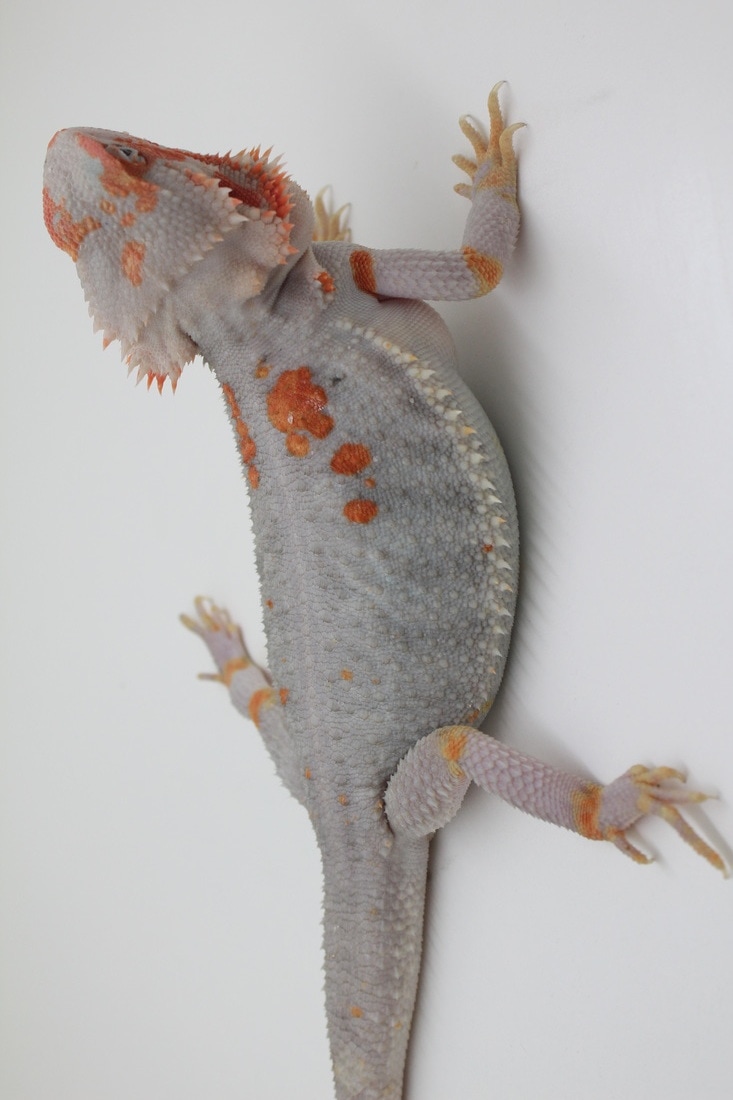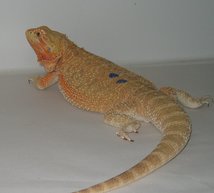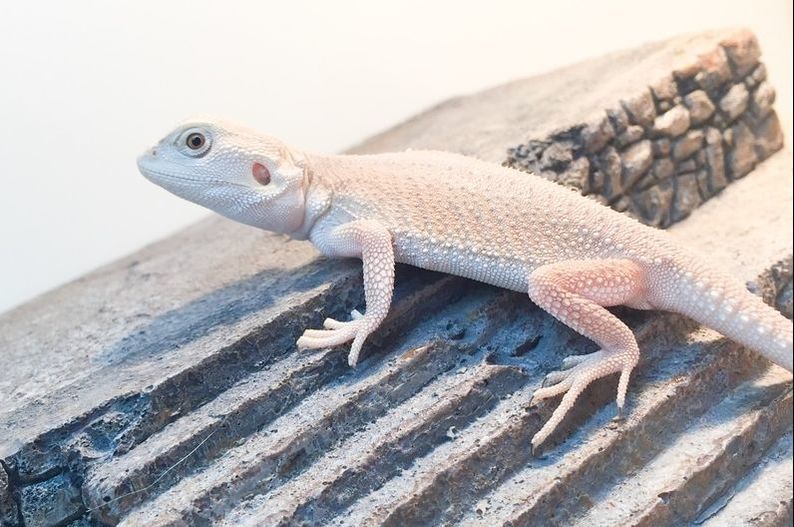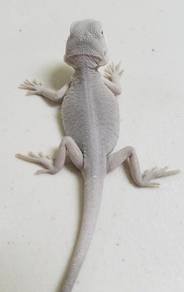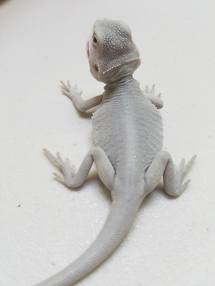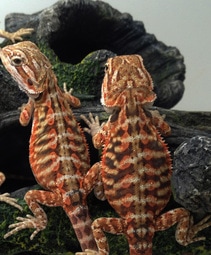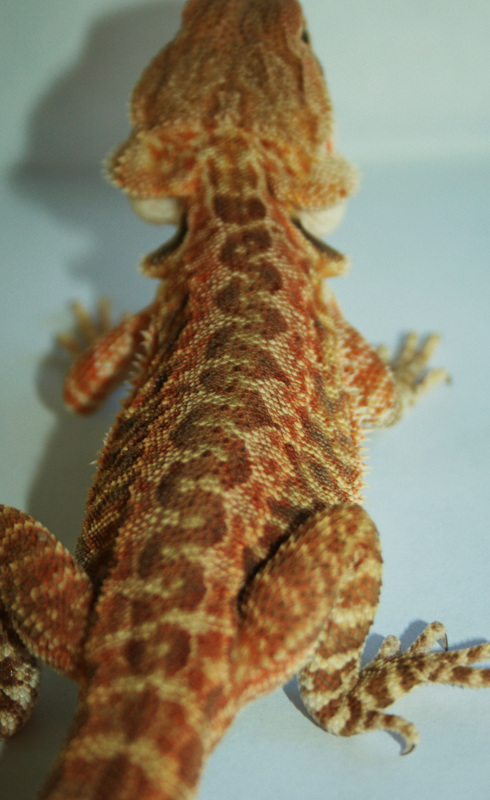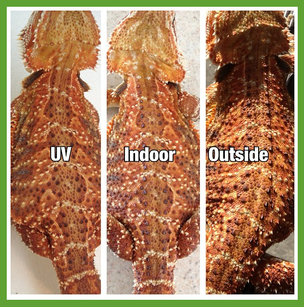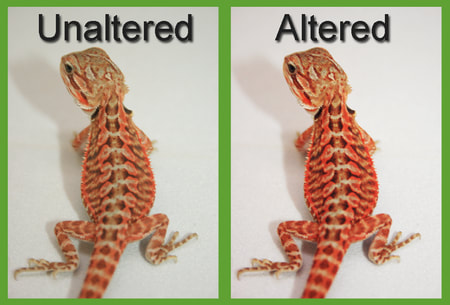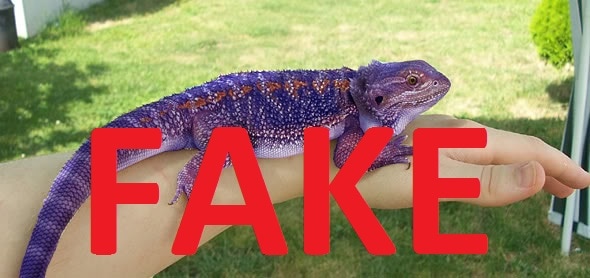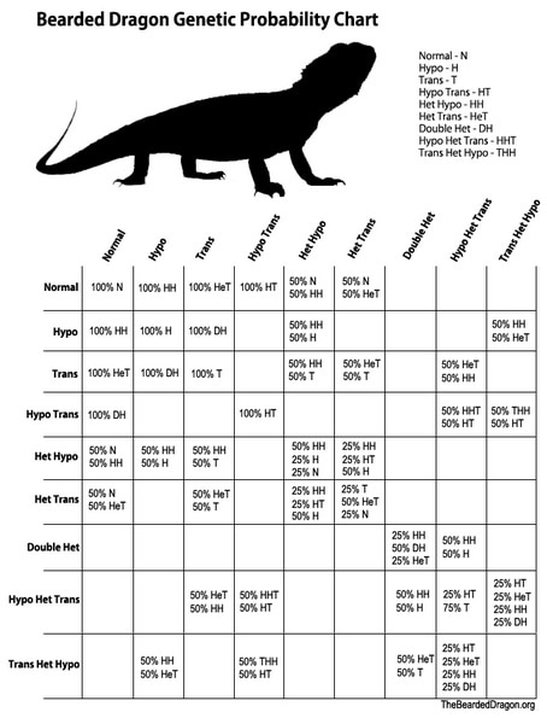Morph, Color & Pattern
It's important to keep in mind that the names of bearded dragon Morphs have a set standard in the legitimate breeding community, but for the names of Colors & Patterns every breeder tends to be a little different.
Colors
There are a wide variety of colors that dragons are born with, and lots of crazy names to describe them. What one breeder calls yellow another calls citrus. Reds can be described as fire or blood and so on. The names used to describe the color are not that important because they can vary widely. Having a cool sounding name makes a dragon seem more special, especially to an inexperienced buyer. Certain colors like Red, Orange and White, especially saturated colors are harder to come by and are more expensive in the breeding market today. And saturated just means that the dragon is covered in mainly one bright and beautiful color. I always separate color from morph because they are 2 different things. Color is color, but morph has to do with the dragons body type, scales and overall appearance.
|
Yellow/Citrus
There are varying degrees of yellow, from a soft pastel seen mostly in hypo morphs to the bright yellow that looks almost like a lemon peel. |
White/Silver
White dragons used to be very rare and arre often mistaken for Albinos, which have yet to be photographed. White and Silver dragons are now more frequently found as Zero & Wiblits morphs carry these colors as a standard. |
|
Brown/Tan
These sandy colored dragons are the most common, they tend to have light grey and brown colors with maybe a hint of muted orange or yellow, these are primarily what you see it your local pet store. |
Purple/Blue
Purple/blue dragons are a product of breeding translucent bearded dragons together. A normal translucent dragon can have a blue tint to its belly but these dragons have that color all over their bodies. Very rare and highly sought after these dragons do not seem to retain their color as they become adults. |
These photos are from google images |
Morphs
There are set discovered morphs for bearded dragons and none of them are named for color. The known dragon morphs are Classic/Standard, Leatherback, Translucent, Hypomelanistic, Dunner, German Giant, Silkback, Witblits, Zero, Wero and Paradox. The dragon's morph can affect their color, but Morph mainly has to do with their body types and in some cases pattern. Some examples like Leatherbacks have less spikes than a Classic, and Silkbacks have none, Hypo has a pastel pigmentation to their skin with more clear nails, and a Translucent can look almost opaque at times especially in their first year, they also tend to have incredibly dark brown eyes that make them look solid black. Each morph has its own unique characteristics that can be on a dragon of any color.
There are set discovered morphs for bearded dragons and none of them are named for color. The known dragon morphs are Classic/Standard, Leatherback, Translucent, Hypomelanistic, Dunner, German Giant, Silkback, Witblits, Zero, Wero and Paradox. The dragon's morph can affect their color, but Morph mainly has to do with their body types and in some cases pattern. Some examples like Leatherbacks have less spikes than a Classic, and Silkbacks have none, Hypo has a pastel pigmentation to their skin with more clear nails, and a Translucent can look almost opaque at times especially in their first year, they also tend to have incredibly dark brown eyes that make them look solid black. Each morph has its own unique characteristics that can be on a dragon of any color.
|
Classic/Standard
The classic bearded dragon has a back covered in spikes and has no special gene or morph, these dragons most closely resemble the ones found in the wild in Australia. |
Leatherback
The leatherback is a favorite among breeders and owners, it has a smooth back with no spikes except the sides and head, with no spikes on their back their colors also appear more vivid. |
|
Translucent
The translucent or 'trans' morph is named for the almost see through appearance of a dragons spikes and scales. Babies tend to have an almost clear belly that looks blue-ish and these dragons most often have deep dark brown eyes that appear solid black and sometimes have blue eyelids. |
Dunner
The dunner dragons were bred by Kevin Dunn, these dragons have a unique pattern that runs down through their tail and their scales have no clear pattern or direction, growing in different directions all over the body. |
|
Hypomelanistic
The hypomelanistic or 'hypo' morph is a dragon that is unable to make darker colors or patterns and have a more pastel appearance, another common trait is clearer nails compared to all other morphs. |
Silkback
The silkback or 'silkie' are a completely scaleless dragon, they are soft as silk to the touch and almost resemble a frog. Due to their lack of scales their color has no interruption and these tend to be the most beautiful colored of all the bearded dragon morphs, but the hardest to care for. |
|
German Giant
The German giant is a dragon that is much larger than a classic dragon, it is very hard to tell if this dragon is truly what you have until it is full grown. This type of dragon requires a much larger enclosure and are very hard to find. |
Photo from Dachiu Dragons |
|
Witblits
Witblits dragons are a newer morph in the community. These pattern-less dragons throw a variety muted colors and have no markings and they can be very expensive. |
Zero
Zero dragons are completely pattern-less and colorless, hence the "zero". These dragons are startlingly white in color and are the new favorite in the breeding community. |
Wero
The combination of breeding a zero with a witblits gave us the wero. This is the newest morph in the dragon breeding community and appears white and patternless.
The combination of breeding a zero with a witblits gave us the wero. This is the newest morph in the dragon breeding community and appears white and patternless.
Photo from Phantom Dragons
Het Huh?
There is a word commonly used in the description of bearded dragon morphs called "Het". This word confuses many new dragon owners and is a lot simpler than it sounds. Het just basically means the dragon carries the trait listed after Het in its genes and if bred may produce babies of that morph, but the trait itself is not showing. For example a Classic Het Hypo is just another way of saying a regular dragon that could produce Hypo babies because one of its parents were Hypo but this offspring does no show the trait. And when breeders say a dragon is Double Het Bearded it can carry both the hypomelanistic and translucent traits, yet do not display them.
Patterns
Patterns can also be a matter of opinion of the breeder. The most commonly thrown around pattern description is "tiger". A tiger pattern indicates the dragon has dark colored horizontal stripes through its sides breaking up its base color like a tiger's stripes, hence the name. I have also seen patterns called "giraffe spots" and "freckles", these and many other funny sounding patterns are not commonly used and are made up by breeders to make a pattern seem more fun. Breeders can call a color and pattern whatever they want, it is truly a matter of opinion, morph however is not.
Patterns can also be a matter of opinion of the breeder. The most commonly thrown around pattern description is "tiger". A tiger pattern indicates the dragon has dark colored horizontal stripes through its sides breaking up its base color like a tiger's stripes, hence the name. I have also seen patterns called "giraffe spots" and "freckles", these and many other funny sounding patterns are not commonly used and are made up by breeders to make a pattern seem more fun. Breeders can call a color and pattern whatever they want, it is truly a matter of opinion, morph however is not.
|
Tiger
The tiger pattern is simple, it looks like a tigers stripes, thick and dark horizontal lines across the dragon's back, depending on the strength of the lines or bars the dragon's value increases. |
Other Patterns
There really aren't any set names for any other dragon patterns other than the trademark pattern of a Dunner morph, there are varying types like this long "S pattern" or "unbroken lines" but these are not a standard types and are just descriptions breeders use sometimes. |
Growing Up Bearded
Keep in mind that as a dragons grows it's colors will change. Some get duller, some brighter and babes frequently have white breaking up their color but as they grow they can become all over saturated. These photos below are of one of my favorite breeders Krull, he started more white and orange and it changed to all over orange:
Light Can Change Everything
When you are purchasing a bearded dragon that you aren't going to see in person watch for altered photos. Lighting makes a difference in color so don't be fooled. Here is an example of the same dragon in different lights and a dragon photo in the same light altered in Photoshop to change the color. Sadly saturation alterations happen a lot in online sales.
When you are purchasing a bearded dragon that you aren't going to see in person watch for altered photos. Lighting makes a difference in color so don't be fooled. Here is an example of the same dragon in different lights and a dragon photo in the same light altered in Photoshop to change the color. Sadly saturation alterations happen a lot in online sales.
Beware of the "Fancy" Bearded Dragons
I frequently get asked what type of dragon is a "fancy" morph. Fancy is not a morph, its an adjective. Fancy dragons have no set traits, it is simply a way of describing bearded dragons that might be a different morph than a classic/standard dragon. This basically means the seller doesn't know the genetics, but the dragon may look different than the other classic dragons. Also "pygmy dragon" is thrown around a lot, be aware that there is no such thing as a pygmy bearded dragon. There is however a species called a Rankin's or Lawson's Dragon which is an entirely different reptile related to Bearded Dragons. Also I have seen breeders make up the most ridiculous labels for dragons like "Blood Red Morph" and "Super Citrus Super Tiger Morph" these are not actual morphs. Keep in mind Color and morph are 2 different things. And "super" is not a legitimate morph, its an opinion. I hate to see anyone pay more than they should for a regular Classic dragon with no special morph because a breeder told them the dragon is fancy. Color, pattern and morph will always affect the price of a bearded dragon, especially from high end breeders. But don't let yourself get taken advantage of by spending more money for something that is just a made up name or photo-shopped in color. Do your research.
I frequently get asked what type of dragon is a "fancy" morph. Fancy is not a morph, its an adjective. Fancy dragons have no set traits, it is simply a way of describing bearded dragons that might be a different morph than a classic/standard dragon. This basically means the seller doesn't know the genetics, but the dragon may look different than the other classic dragons. Also "pygmy dragon" is thrown around a lot, be aware that there is no such thing as a pygmy bearded dragon. There is however a species called a Rankin's or Lawson's Dragon which is an entirely different reptile related to Bearded Dragons. Also I have seen breeders make up the most ridiculous labels for dragons like "Blood Red Morph" and "Super Citrus Super Tiger Morph" these are not actual morphs. Keep in mind Color and morph are 2 different things. And "super" is not a legitimate morph, its an opinion. I hate to see anyone pay more than they should for a regular Classic dragon with no special morph because a breeder told them the dragon is fancy. Color, pattern and morph will always affect the price of a bearded dragon, especially from high end breeders. But don't let yourself get taken advantage of by spending more money for something that is just a made up name or photo-shopped in color. Do your research.
Bearded Dragon Breeding Probabilities
